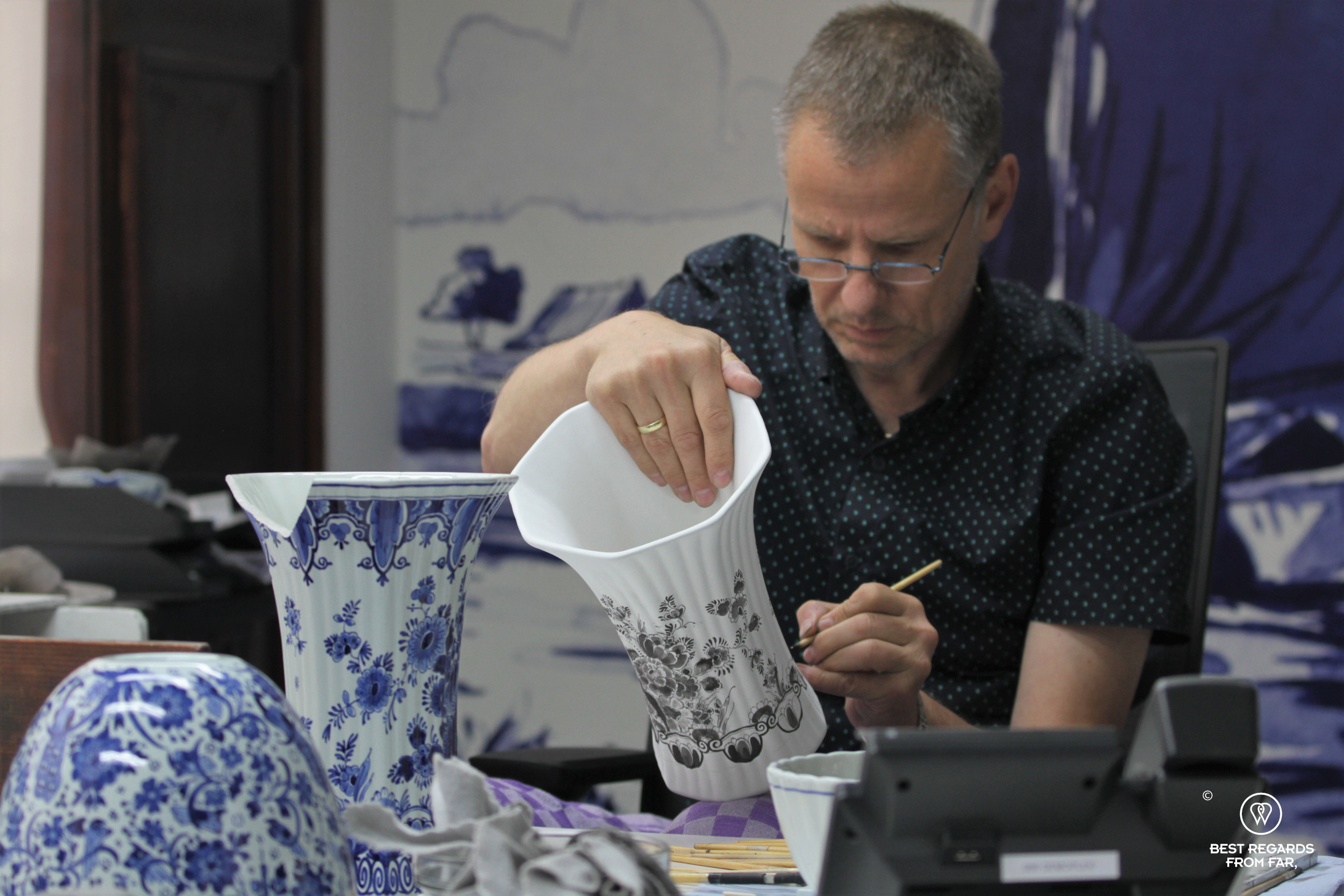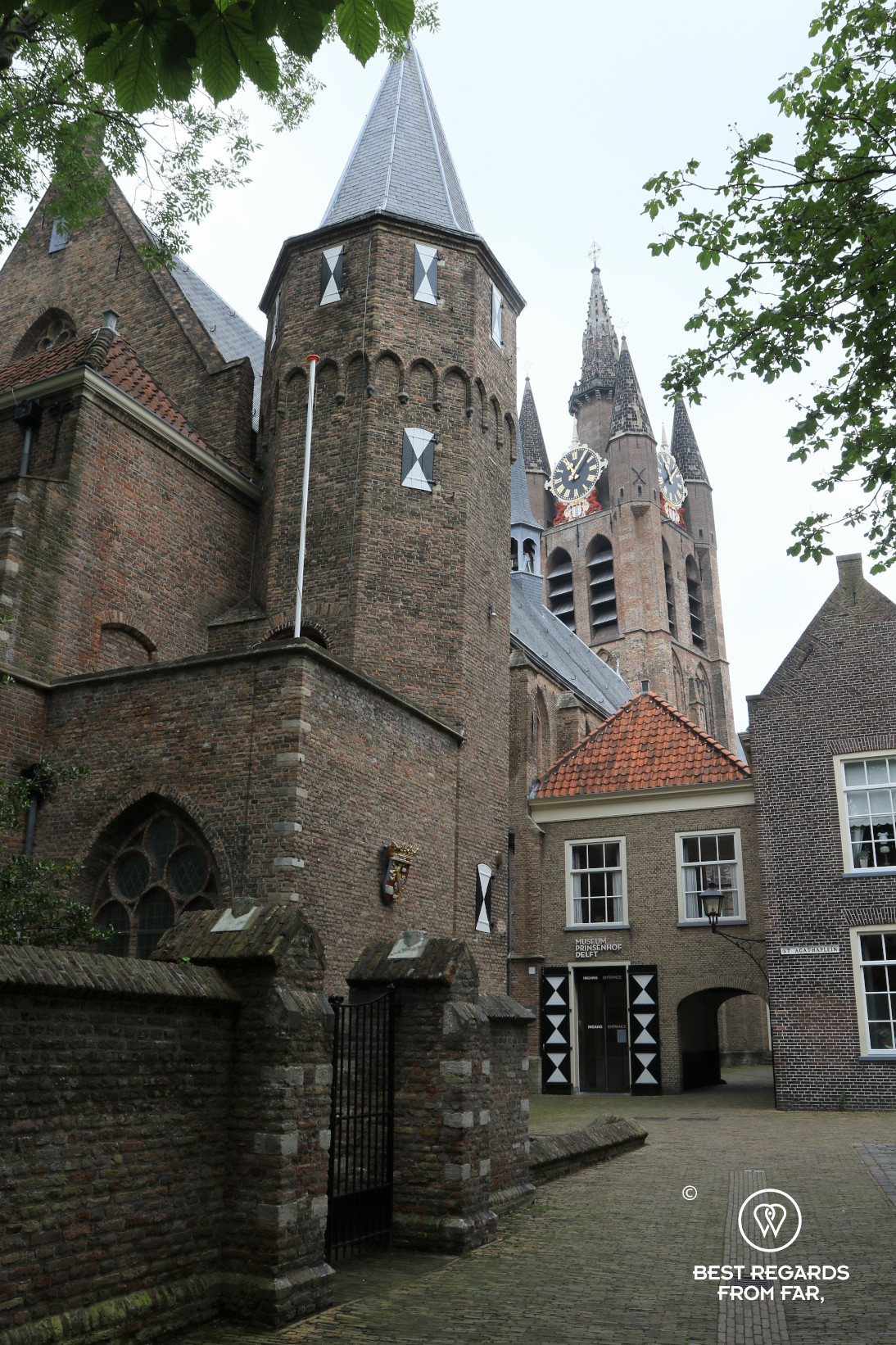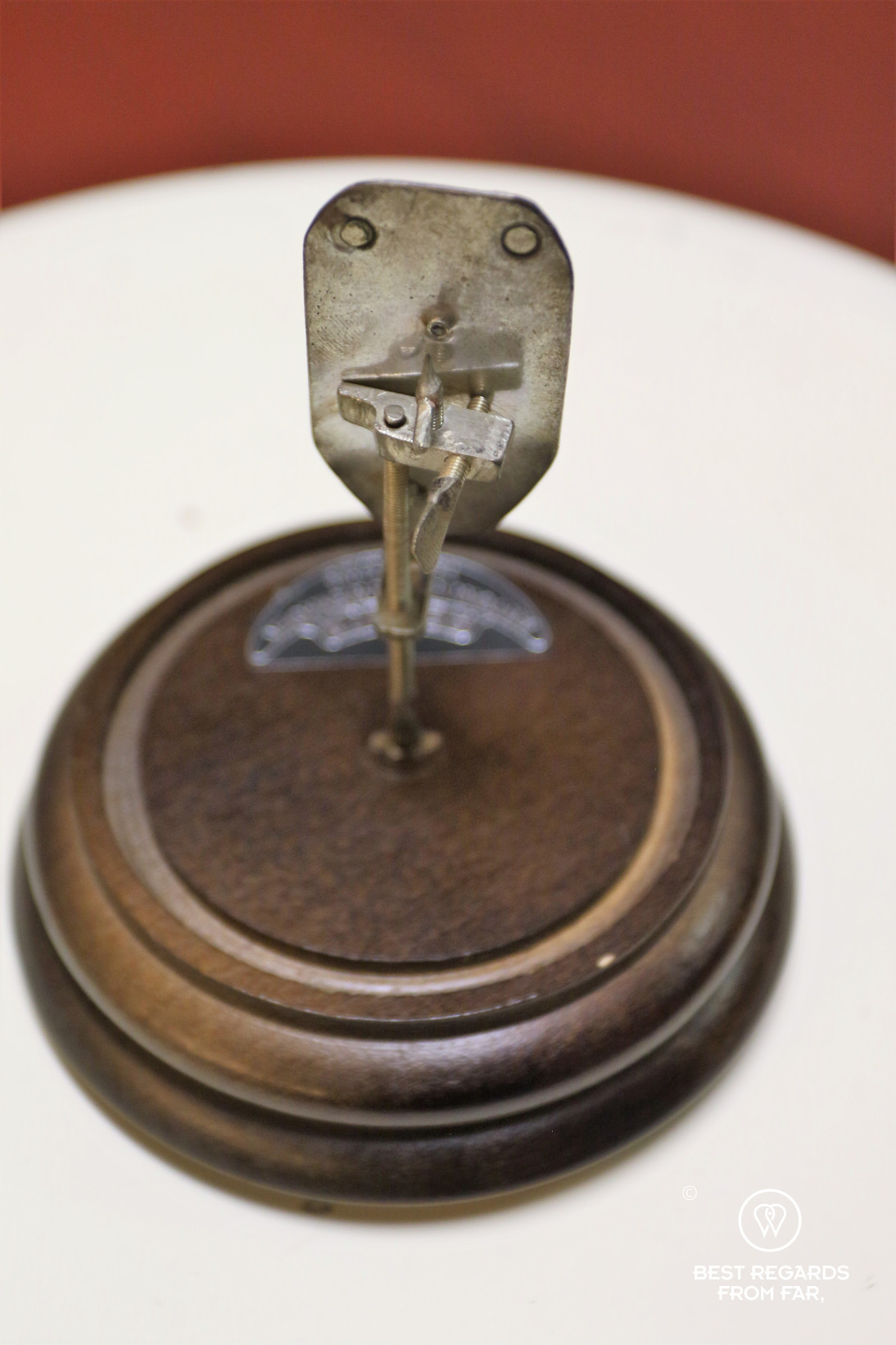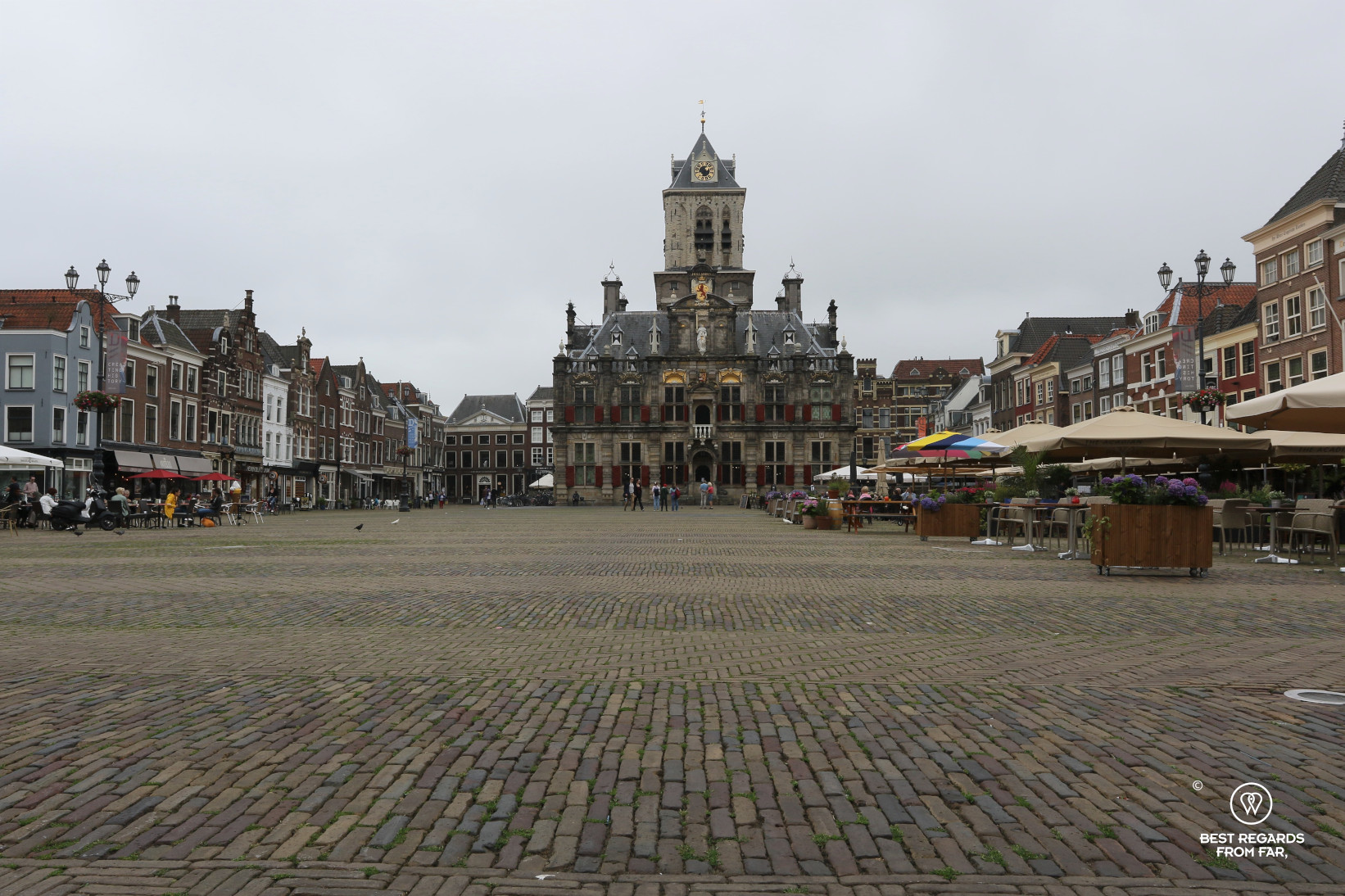Text: Marcella van Alphen & Claire Lessiau
Photographs: Marcella van Alphen & Claire Lessiau
Most visitors check Delft out on a Keukenhof day trip, spending only a few hours in the city. Shame! Lovely Delft has a lot to offer beyond its Market Square, Vermeer Centrum and must-visit Royal Delft earthenware factory. Dive into the city, the cradle of today’s Netherlands, to explore this 17th-century postcard a stone’s throw away from Rotterdam and The Hague.
To appreciate it better, here are 10 fun and interesting facts about Delft that you probably did not know about…
1. There are no traces left of Vermeer in Delft
Today, Vermeer is remembered for his beautifully lit intimate scenes of daily life in Dutch bourgeois interiors. The View of Delft (1660) and The Girl with a Pearl Earring are his most famous paintings that even inspired Hollywood movie makers. Delft was his decor, and the light, his muse: bright, filtered, reflected, soft, hard, shining, smooth… He could render it as no one had ever done before.
Johannes Vermeer (1632-1675) was born in Delft during the Dutch Golden Age and spent all his life in the city. He grew up there, lived there and had his workshop there. The city was his favourite decor. However, there is nothing left of Vermeer in Delft: the paintings of the famous but broke master were auctioned off after his death. Out of an estimated 50 paintings (Vermeer worked slowly), 37 have remained and are now scattered around the world from Le Louvre to the Rijksmuseum and the Frick Collection. His father’s inn, The Flying Fox and Mechelen, where many artists met and where the young Johannes probably educated himself (nothing is known about who his master was) is gone. Vermeer’s house was destroyed. No writings were left by him.




The only tangible place that could recall Delft’s most famous painter was the guild of Saint Luke’s house which he visited on a daily basis and that he also led twice. The institution aimed at protecting painters, decorators, sculptors, carpet weavers, Delftware potters and art dealers in an open market. Back in 2006, it was rebuilt to house the Vermeer Centre. It showcases on scale reproductions and attempts to answer questions about the life of the mysterious artist and his technique that allowed him to render light in such a magnificent way.
Note that the master is buried in the Old Church, with a minimalistic stone that dates back to 1975 and that was put down to commemorate the 300th anniversary of Vermeer’s passing…
2. The paint used for the famous Delft blue earthenware is black
When applied on the delftware to be, the paint composed of cobalt oxide is black. Its actual recipe is a well-guarded secret. It is only after being fired at more than 1,000°C in a kiln that the painted motifs turn blue. To truly experience Delft Blue and know what it is all about, check this article out!



Bonus fact: a large-scale 3D map of 17th-century Delft made exclusively in ceramics is showcased across the Stadsbakkerij de Diamanten Ring bakery. It’s a real piece of art and so fun to study. While you are at it, you may want to check out the bakery where locals queue on Saturdays to order their favourite out of 70 different sorts of breads! The local specialty is the Scheve Jantjes, a shortbread dough cookie.


3. Why orange is the colour of the Netherlands
William Count of Nassau was part of the German nobility. When he was eleven, he received as inheritance from a cousin lands in the Netherlands and France, including the principality of Orange in southern France. William, also nicknamed William the Silent, became ‘Prince of Orange’. If this still defines the favourite colour in the flat country, it is because William became the father of the kingdom of the Netherlands.
The glorious military leader, educated catholically at the court of Emperor Charles V in Brussels along Philip II, the emperor’s son, was fundamentally opposed to the latter. The devout Catholic Philip, King of Spain, was striving for an empire with a single religion, while his vassal William advocated for freedom of religion. The iconoclastic fury was the trigger for an open armed opposition: in 1566, Protestants destroyed the interiors of Catholic Churches in the Low Lands. Philip sent repression, and William started the armed struggle, taking the leadership in the Dutch Revolt against Spanish domination.





In 1572, William made the fortified city of Delft the seat of his government and the Prinsenhof became his home. Despite high security, on July 10, 1584, he was shot dead by Balthasar Gerards, a Catholic fanatic. Gerards was caught immediately and tortured atrociously: while he was still alive, his heart was ripped out of his body and thrown at his face, his body was cut into pieces by the executioner, and his head was chopped off and put on a stake near the Prinsenhof.
The bullet holes still show in the wall of the Prinsenhof *. The legend of William of Orange was established. The colour remains!
* The Prinsenhof is Delft’s top museum showcasing the life and death of William of Orange, the delftware tradition and local artists such as Pieter de Hooch, a contemporary of Vermeer.


4. The microscope (& microbiology) was not invented by a scientist – and you may have guessed: it was invented in Delft!
Antony van Leeuwenhoek (1632-1723) from Delft worked in the textile trade when he first used a magnifying glass in 1648 to check the quality of the threads of the fabric. In 1664, the book Micrographia by the physicist Robert Hooke was published, describing his discoveries under a double-lens microscope. Autodidact, the cloth merchant from Delft learnt how to blow, grind and polish glass. As a result, when Hooke’s lenses magnified by 30 times, Leeuwenhoek’s single-lens magnified by 270 times! Leeuwenhoek could observe red blood cells, bacteria, protozoa… that no one had never been seen before. With no scientific background whatsoever, the Delft autodidact manufactured more than 500 microscopes over his lifetime!
He is buried in the Old Church where, contrary to the small stone of Vermeer, he is honoured with a large not-to-miss tombstone.




The Medisch Farmaceutisch Museum De Griffioen presents a collection of ancient medical, nursing, dental and pharmaceutical instruments gathered by the former director of the Delft hospital who was a collector of microscopes. It is the perfect place to get more familiar with Delft’s scientists such as Leeuwenhoek, van Kipp (the inventor of the Kipp’s apparatus to prepare gases), Reinier de Graaf (in the field of reproductive biology) or Govert Bidloo (anatomy). Make sure to make an appointment to visit this hidden gem!
5. Delft’s city centre actually consists of 11 islands and 80 bridges!
The market square itself used to be an island connected to the rest of the city by 8 bridges!
One of these bridges was particularly important… In the old times, Delft was the market place for products from the surrounding countryside. And even before beer, its best-selling product was its high-quality butter. Peasants from local farms would come to the Boterhuis to trade it. The butter needed to be stored cold: it was kept under a bridge close to the guild house. With an intense boat traffic to and from the weighing station close to the guild houses, that butter bridge eventually evolved into what looks like a street today, actually encompassing two merged canals.
Later, cheese would be made: this was a way of conserving the milk longer and being able to travel with it and it remains one of the country’s top exports!




6. The city almost self-destroyed!
In the Middle Ages, Delft is a busy city by the water with surrounding farms, breweries and inns. By 1350, with 6,000 inhabitants, Delft is the second largest city of Holland. During the Dutch Golden Age, Delft is rich: the industry is booming with carpet weaving mills and looms, breweries and earthenware. Well-established in town, the Dutch East India Company (VOC) is involved in the lucrative trade of sugar, slaves and privateering. Arts are thriving, supported by the wealthy bourgeoisie.
However, this Dutch Golden Age made surrounding nation’s envious, and war broke out. To prepare for it, ammunitions were brought in and stored into Delft. Tragically, in 1654 a gunpowder store exploded: a quarter of the city was destroyed!


7. Members of the Dutch Royal family are all buried in Delft
Since William of Orange, Delft has remained special for the Netherlands and its royal family has been closely bound to Delft. To this day, members of the Dutch royal family are all buried in the royal crypts in the choir of the New Church on Delft’s Market Square. The tradition was started with William of Orange who was buried there upon his assassination in the Prinsenhof in 1584.
Actually, since 1829, it has been illegal to bury anyone in a church for hygienic reasons. The expression “stinking rich” refers to the decaying smells covered up by incense in churches as only influential and wealthy citizens were buried in there to be closer to God. The only exception to this law is for the members of the Dutch royal family, and according to the current enlargement of the royal crypt, the tradition is to remain for a little while!


8. Delft has its own leaning tower of Pisa [The Old Church]
Easily recognisable by its leaning 75-meter-high tower, as it stands about two meters off plumb, Delft’s own leaning tower of Pisa has been part of the ever-changing skyline of the Dutch town for almost seven centuries (while the Old Church itself is almost a millennium old!).
The reason for its leaning is the way it was built: a canal was in the way and was filled to allow for the building of the tower in 1325. It turned out that this base was too soft. To sort of fix it, brick workers continued straight up, creating a kink!
For centuries, many avoided the edifice, worried. Do not commit the same mistake: the tower has been stabilized and is closely monitored. You can safely visit The Old Church and pay your respects to Antony van Leeuwenhoek, Vermeer and his minimalistic burial stone or Piet Hein and his monumental tombstones (whom most likely you have never heard of if you are not Dutch! *), admire the stained-glass windows, and the beautiful pulpit.
* Piet Hein (1577-1629) was a Dutch admiral who captured a monumental amount of gold and silver from the Spanish fleet and is celebrated today as one of the Netherlands’ heroes.




9. A unique storm-proof umbrella!
The Delft Technical University (often referred to as TU Delft) is one of the best engineering universities in the Netherlands, emanating from the 1842 Delft Royal Academy. This, combined to the very rainy and windy weather that is so characteristic of the country, has led to a funny umbrella… A few years ago, a team of students developed an asymmetric umbrella that would not turn inside out in strong winds, using state-of-the-art computational fluid dynamics (CFD). The storm umbrella by senz° was born!
A very useful accessory when visiting the Netherlands… What a better place than Delft to try it!


10. Get flour straight from the mill (or go the the Stadts Koffy Huis)!
Out of 18 windmills that used to tower the city of Delft, one has remained: the Molen de Roos. It has been standing here since 1679 and slowly transformed into the large brick mill we can see today. Thanks to a team of passionate volunteers, the mill operates several days a week and 1,500 kilograms a week of flour are produced: for the most part wheat, and also rye and spelt. These high-quality flours can be bought at the mill or tasted in a few places around town like in the delicious pancakes of the socially responsible Stads Koffyhuis. Also note that this café has been awarded for making the best sandwich of the Netherlands many times: try the Burrata di Vega.
Even better, the mill can be visited! Climb up the steep ladders and explore the seven floors of the 27-meter-high mill: follow the bags of grain as they are hoisted up to the pouring floor, go all the way up to see how wind power is transmitted thanks to the wooden gears, and see the flour being ground by the millstone. It cannot get more Dutch than this, can it?







11. Maybe it can get a little bit more Dutch with a kopstootje [De Klomp]
Locals have been coming to De Klomp, the oldest bar of Delft, for more than 400 years! Founded in 1652, this cosy typical Dutch pub has kept its charm. Beyond the impressive choice of beers, the very typical Dutch thing to do is to order a kopstootje. Basically, it is pairing a lager with a shot of Jenever, the traditional spirit from the Low Lands. Not sure where to start, ask for “het ideale kopstootje” and make sure your hotel is only a short stroll away. Don’t forget to order some “bitterballen” as a snack. It really doesn’t get any more Dutch than this!


12. Actually, can you really stomach the ultimate Dutch delicacy?
There is a must-try lunch spot in Delft: the visbanken fish market. Locals have come here for centuries to buy fresh fish, and also to nibble on some of the favourite Dutch snacks onsite: kibbeling and raw herring.
Kibbeling is pieces of fried cod and it is even better with a garlic sauce. If you like fish and chips, you’ll love kibbeling!
Raw herring is a bit on the strong side, and is often ordered with chopped raw onions. The local way to have it is to shove it in! It is also possible to order it on a bread roll to make it a bit easier. If it is available year-round these days, fresh herrings are caught is between May and August and called “Hollandse Nieuwe“. A must-try, full of healthy vitamins, fats and proteins!


Travel tips:
- For maps, self-guided walks (historic, art…) and good tips, refer to the Tourist Information VVV Delft on the Market Square.
- Check out this interactive map for the specific details to help you plan your trip and more articles and photos (zoom out) about the area (short tutorial)!